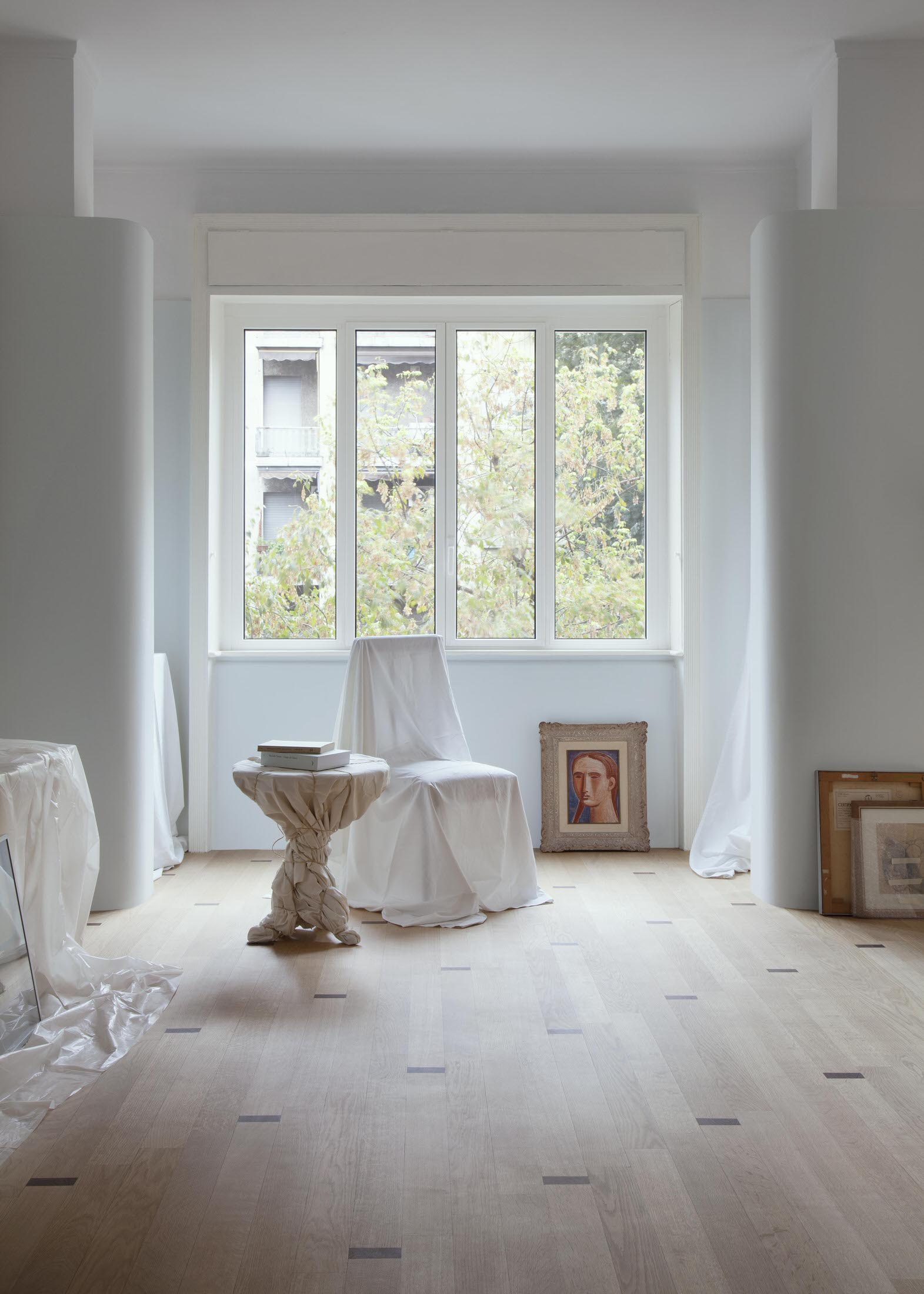



Nietzche Dice is a home in Milan in a state of suspension. Suspended in time. Suspended from the outside world.
The interior has been conceived with a continuous contemporary boiserie, creating a space between the ceiling and the rooms below. As a consequence, the walls, the ceiling and the floor turn out to be three separate uninterrupted elements, orientated in different ways to create a unique atmosphere.
Designed by CMQ Architettura, a local firm founded by Antonio Boeri, Ludovico Oldini and Davide Pagano, the apartment is sparsely furnished. The deliberately unfinished feeling of the interior creates a character all of its own. Curious as to how they captured this, we sat down with the team for a quick chat to find out a bit more. Check it out below.




 An abstract scenography from the space planning stage that is matched in vibe by the final product.
An abstract scenography from the space planning stage that is matched in vibe by the final product.YELLOWTRACE: The styling captures a vibe and gives this space character even though it’s not furnished or “finished”. Would you be able to comment on this?
CMQ ARCHITETTURA: The domestic atmosphere we have tried to recreate in the project Nietzche Dice is rarefied and suspended in time. The original features of the apartment, for instance, the bow window of the living room, were already very characterising. In this project we have tried to enhance these original features, re-interpreting in a contemporary style some architectural elements, such as the paving and the boiserie. This particular time condition, between past and present, made us imagine a set of unfinished furniture populating the space.
How did you become involved with this project? What was the client brief?
The project has been interesting as the clients were two young professionals planning to move to a new apartment. As they were used to travelling a lot for work, they wanted a spacious and dynamic apartment.
What’s your favourite thing about this apartment?
We are very happy with the parquet floor. Our goal was to equip the apartment with contemporary flooring but with a reference to traditional Italian wooden floors. The result has been a kind of matrix that interlaces two different kinds of wood, oak and wing, able to link all the rooms of the apartment.
What informed the selection of furniture and finishes?
Most of the finishes and furniture are custom-made and realised by local carpenters and painters. Some furniture pieces are from the Capellini Group, and the paints and lacquers are from the brand Sikkens.





What was the most challenging aspect of bringing this project to life?
The budget was not very high. Despite this we have tried to make the right economical choices, giving priority to the finishes we considered more characterising for the apartment.
What aspect of this project are you most proud of?
We are really proud of the final atmosphere of the house as we believe it reflects very well the identity of the clients.
Would you have done anything differently?
We believe there are several ways to work with a space. In this specific case, we are happy to have made several design choices in balance with each other.
Are there any other interesting facts you could share with us?
Recovering some furniture has been quite challenging. In the middle of August, we had to travel from Milan to Rome by car to recover a shower tray…but it was worth it!
